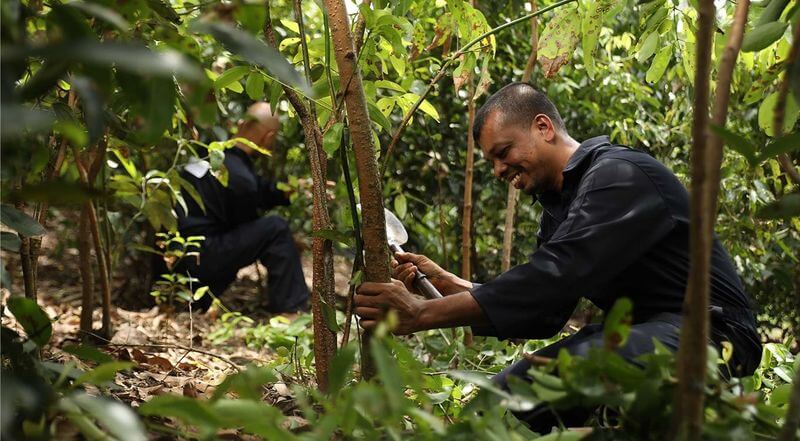Sri Lanka Cinnamon

Cinnamon is the peeled, dried bark of some Cinnamomum spp. belonging to the family Lauraceae. It has been used as a spice by human beings since ancient times.
Cinnamon has long been used as an ingredient in cooking and is an important ingredient in both the confectionary and cosmetics industries.
In addition to generating significant foreign income, over 350,000 families are involved in the cinnamon industry, demonstrating its long-established role in the Sri Lankan society. The spice constitutes many bioactive compounds with antioxidant, antimicrobial, and insecticidal properties, in addition to therapeutic and preventive effects against many diseases and disorders. New uses of cinnamon continue to emerge, and in this review, we discuss the opportunities for crop and product improvement, which will likely impact positively on the lives and livelihood of the population in Sri Lanka.

Cinnamomum zeylanicum Blume, known as Ceylon cinnamon, is native to Sri Lanka, whereas Cinnamomum cassia J. Presl (Cassia cinnamon) and other types of Cinnamomum spp. are grown in China and many other parts of Asia. Ceylon cinnamon is relatively expensive due to its chemical composition, high quality, proven health benefits, and ultra-low levels of the toxic chemical compound, coumarin, which is reported in comparatively high concentrations in Cassia cinnamon. In Sri Lanka, more than 350,000 families are involved in the cinnamon industry. Among the total agricultural produce of Sri Lanka, cinnamon exports provide the second highest in terms of income (second only to tea). In addition to the use of cinnamon as a spice, leaf and bark extracts are used in the food industry to (a) improve the postharvest life of perishable foods through antimicrobial activity and (b) control pests in postharvest storage (insecticidal activity). The human health benefits include antioxidant activity and therapeutic and preventative properties against diseases and disorders. The potential uses of Ceylon cinnamon in the global food industry, health, and cosmetics sectors are abundant. However, to ensure maximum benefits to producers and consumers, accredited laboratory testing and legislative procedures need to be developed and strengthened to detect and reduce malpractice and product adulteration in the global marketplace.
